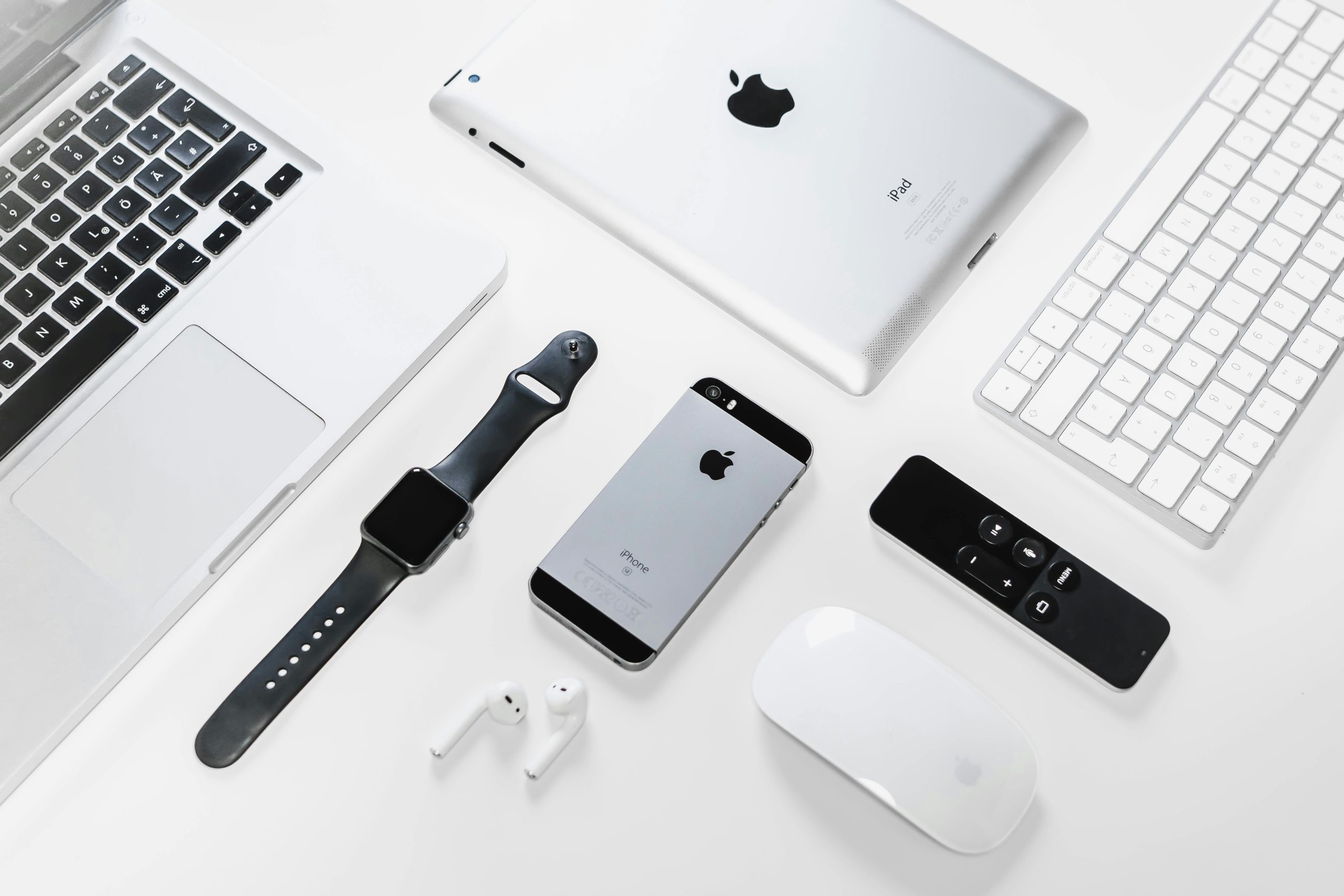How to Update Your iPhone Using a Mac: A Comprehensive Guide

Keeping your iPhone up-to-date with the latest software is crucial for security, performance, and accessing new features. While many users update their iPhones wirelessly, using a Mac computer offers a reliable alternative, especially for larger updates or when encountering issues with over-the-air (OTA) downloads. This guide will walk you through the process of updating your iPhone using your Mac, covering everything from initial preparation to troubleshooting common problems. As of 2024 and into 2025, Apple continues to refine its operating systems, making these updates essential for a seamless user experience.
Why update Your iPhone?
Software updates from Apple, such as iOS 18 and subsequent point releases, bring a multitude of benefits. These include:
- Enhanced Security: Updates often patch vulnerabilities that could be exploited by malicious actors. For instance, security updates released in late 2024 and early 2025 have addressed critical zero-day exploits, protecting user data.
- Performance Improvements: Apple frequently optimizes its software for better speed, battery efficiency, and overall responsiveness. Users often report smoother operation after installing the latest iOS version.
- New Features: Major iOS releases introduce new functionalities, such as advanced AI capabilities in iOS 18, redesigned apps, and improved privacy controls.
- Bug Fixes: Updates resolve known issues and glitches that may affect app stability or device functionality.
- App Compatibility: Developers often require the latest iOS version for their apps to function correctly.
Prerequisites for Updating Your iPhone on a Mac
Before you begin the update process, ensure you have the following:
- A Mac Computer: Ensure your Mac is running a recent version of macOS. For the latest features and compatibility, macOS Sonoma (released in 2023) or macOS Sequoia (expected in 2024) is recommended.
- Latest Version of Finder or iTunes: If you are using macOS Catalina or earlier, you will use iTunes. For macOS Big Sur and later, the iPhone management features are integrated into Finder. Ensure you have the latest version installed.
- USB Cable: A reliable USB-C to Lightning or USB-A to Lightning cable to connect your iPhone to your Mac.
- Stable Internet Connection: A Wi-Fi or Ethernet connection for your Mac to download the update files.
- Sufficient Storage Space: Both your Mac and your iPhone need adequate free space to download and install the update.
- Fully Charged iPhone: It’s advisable to have your iPhone charged to at least 50% or connected to a power source during the update process.
Step-by-Step Guide: Updating Your iPhone via Mac
The process differs slightly depending on your macOS version. We will cover both scenarios.
Method 1: Using Finder (macOS Catalina and later)
For Macs running macOS Catalina (10.15) or newer, Finder is the primary tool for managing your iPhone.
Step 1: Back Up Your iPhone
Before initiating any software update, it is highly recommended to back up your iPhone. This ensures that your data is safe in case anything goes wrong during the update process.
- Connect your iPhone to your Mac using the USB cable.
- Open Finder. You may need to click the Finder icon in your Dock.
- Select your iPhone from the sidebar under “Locations.” You might need to click “Trust” on your iPhone and enter your passcode if this is the first time connecting it to this Mac.
- In the Finder window, navigate to the “General” tab.
- Under the “Backups” section, click “Back Up Now”. You can choose to back up your data to your Mac or to iCloud. Backing up to your Mac is generally faster for large amounts of data.
- Wait for the backup process to complete. You can see the progress at the bottom of the Finder window.
Step 2: Check for and Download the Update
Once your backup is complete, you can proceed with checking for the iOS update.
- With your iPhone still connected and selected in Finder, go to the “General” tab.
- Click the “Check for Update” button. Finder will communicate with Apple’s servers to see if a new iOS version is available for your iPhone model.
- If an update is available, you will see a notification. Click “Download”. The download process can take some time depending on the size of the update and your internet speed. You can continue using your Mac while the update downloads.
Step 3: Install the Update
After the download is finished, you can install the update on your iPhone.
- Once the download is complete, the “Download” button will change to “Update”.
- Click “Update”.
- You may be prompted to enter your Mac’s password.
- Your iPhone will then prepare for the update, restart, and install the new iOS version. This process can take several minutes. Do not disconnect your iPhone during this time.
- Your iPhone will restart and show the Apple logo with a progress bar. Once the installation is complete, your iPhone will restart again and present the Lock Screen.
Method 2: Using iTunes (macOS Catalina and earlier, or Windows PCs)
If your Mac is running macOS Mojave (10.14) or an earlier version, or if you are using a Windows PC, you will use iTunes.. Find out more about explore Mac Finder.
Step 1: Back Up Your iPhone
Similar to the Finder method, backing up is the first crucial step.
- Connect your iPhone to your Mac or PC using the USB cable.
- Open iTunes. If it doesn’t open automatically, launch it from your Applications folder or Start Menu.
- Click the iPhone icon that appears near the top-left corner of the iTunes window.
- In the “Summary” tab, under the “Backups” section, select “This Computer”.
- Click “Back Up Now”. For added security, you can check the box for “Encrypt local backup” and set a password. This will back up sensitive data like Health and Keychain.
- Wait for the backup to finish. You can monitor the progress in the status bar at the top of the iTunes window.
Step 2: Check for and Download the Update
With your iPhone backed up, you can now check for the iOS update.
- In the “Summary” tab of iTunes, under the “Version” section, click “Check for Update”.
- If an update is available, click “Download and Update”.
- iTunes will download the software. You will see the download progress in the top-left corner of the iTunes window.
Step 3: Install the Update
Once the download is complete, you can install it.
- After the download finishes, iTunes will prompt you to install the update. Click “Update”.
- You may be asked to enter your Mac’s or PC’s password.
- iTunes will verify the software and then install it on your iPhone. Your iPhone will restart during this process. Ensure the device remains connected until the update is fully installed.
- Your iPhone will reboot and display the Apple logo with a progress bar. After completion, it will restart again, and you’ll see the Lock Screen.
Troubleshooting Common Update Issues. Find out more about discover Fi Mac.
While the update process is generally smooth, you might encounter a few hiccups. Here are some common issues and their solutions:
Issue 1: “Update Failed” or “Unable to Download Update”
Possible Causes: Unstable internet connection, insufficient storage space, or Apple’s servers being overloaded.
Solutions:
- Check Internet Connection: Ensure your Mac has a stable Wi-Fi or Ethernet connection. Try restarting your router.
- Free Up Storage Space: On your iPhone, go to Settings > General > iPhone Storage to see what’s taking up space. Delete unused apps or large files. On your Mac, ensure you have ample free disk space.
- Try Again Later: If many people are trying to download the update simultaneously, Apple’s servers might be busy. Wait a few hours or try the next day.
- Restart Your Mac and iPhone: A simple restart can often resolve temporary glitches.
Issue 2: iPhone Stuck in Recovery Mode or DFU Mode
Possible Causes: Interruption during the update process, corrupted download, or hardware issues.
Solutions:
- Recovery Mode: Connect your iPhone to your Mac. Open Finder (or iTunes). You should see a message indicating that an iPhone has been detected in recovery mode. Click “Restore iPhone”. This will erase your device and install the latest iOS, after which you can restore from your backup.
- DFU Mode (Device Firmware Update): This is a more advanced mode. The steps to enter DFU mode vary by iPhone model. Once in DFU mode, connect to your Mac, open Finder (or iTunes), and select “Restore”. This performs a clean install of the firmware.
Important Note: Restoring your iPhone will erase all data. Ensure you have a recent backup before proceeding.
Issue 3: Update Takes Too Long
Possible Causes: Slow internet connection, large update file size, or a busy Mac.
Solutions:
- Patience: Large updates can take a significant amount of time. Ensure your iPhone is connected to power and leave it undisturbed.
- Check Internet Speed: Run an internet speed test on your Mac to gauge your download speed.
- Close Unnecessary Apps on Mac: Free up your Mac’s resources by closing any applications you are not actively using.
Advanced Tips and Considerations
Using IPSW Files for Manual Updates
In some cases, you might want to manually install an iOS update using an IPSW (iPhone Software) file. This is useful for beta testing or if you need to downgrade (though downgrading is often restricted by Apple).
- Download the Correct IPSW File: Visit trusted sources like Apple’s official developer website or reputable tech sites that provide direct download links for IPSW files. Ensure you download the file specific to your iPhone model and the desired iOS version.
- Connect Your iPhone to Mac.
- Open Finder (or iTunes).
- Locate Your iPhone.
- Hold the Option key (Mac) or Shift key (Windows) and click “Update” or “Restore.” This will open a file browser.
- Select the downloaded IPSW file and click “Open.”
- Finder (or iTunes) will then install the selected iOS version onto your iPhone.
Caution: Installing incorrect IPSW files can cause serious issues, including bricking your device. Always use files from trusted sources and ensure they match your exact iPhone model.
Keeping macOS Up-to-Date
Ensuring your Mac’s operating system is current is also vital for a smooth iPhone update experience. macOS updates often include improvements to how Macs interact with iOS devices.
- Go to System Settings (or System Preferences) > General > Software Update on your Mac.
- Install any available macOS updates.
Checking Update History
You can verify which iOS versions have been installed on your iPhone:
- On your iPhone, go to Settings > General > About > iOS Version.
This information is also visible in Finder (or iTunes) under the “General” tab when your iPhone is connected.
Conclusion
Updating your iPhone using a Mac is a straightforward process that offers a stable and reliable method for keeping your device current. By following these steps, backing up your data, and understanding potential troubleshooting techniques, you can ensure your iPhone benefits from the latest security patches, performance enhancements, and exciting new features that Apple releases throughout the year. As of 2024 and looking into 2025, staying updated remains a cornerstone of the Apple ecosystem, providing a secure and optimized experience for all users.









